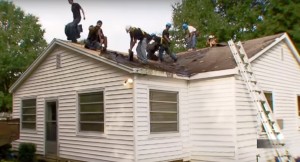 Understanding what is flashing in roofing systems
Understanding what is flashing in roofing systems
To get into roof flashing definition, take a look at your roof. It doesn’t matter what this part of your home is made of: clay tiles, shingles, wood shakes, metal panels, coal tar pitch, or others. Considering the roofing system, it is just a part of it, but not the main weather barrier that protects your house from water leaking. The inconspicuous hero here is roof flashing. To keep your shingles, some areas of the roof that may be more delicate to damage, and wall constructions from water penetration, you need flashing — a waterproof material that prevents moisture seeping in. So, the process of roof flashing is a way for improving your house and insure yourself from unpleasant consequences, for example, mold. The concept of its work is simple. It collects unnecessary water and directs it away.
Now you know what is flashing in roofing system, but which material is better to choose for this element? There are four common materials:
- aluminum;
- galvanized steel;
- lead;
- copper.
For house owners who wish to install this part of the roof on their own, the best option will be aluminum. It is the least expensive and durable. However, be careful with aluminum, as flashing pieces can be applied using concrete or cement, so aluminum requires adding a finish to avoid corrosion. Also, galvanized steel will be the most optimal and reliable option. Long exposure to water and moisture is not a challenge to this type of flashing material.
Importance of proper roof flashing installation
Competent installation of the deck to roof or roof to wall flashing details is crucial for proper protection from water. Remember, flashing details is a technical side of the roof construction, so to prevent a poor performing of flashing, it is recommended to use the help of experts. Without their skills and knowledge, it will be impossible to ensure yourself with perfect results. For example, there are different techniques for different areas of the roof:
- base flashing is a metal barrier installed in the area where the roof and vertical surface are joining;
- step flashing is for cases when the sloping roof deck meet the vertical wall;
- head flashing is for protection of windows, doors, and other openings;
- counter-flashing is a 2-piece system for flashing chimneys;
- plumbing vent flashing is usually a cylindrical piece installed over pipes or flues.
To study the roof flashing definition and delve into the instructions, its types, and concept of work will not be enough for DIY installation. It is vital to comply with safety requirements, understand best practices, learn all nuances before the process starts. And only a professional can do it. If you need to protect some vulnerable areas of your home, consider hiring a company with a team that will take care of your house. If you don’t want the flashing details to be damage because of the poor work or errors during installation, choose an experienced specialist who will ensure the right work of every piece of flashing, no matter where it is located around your house.
If you need a competent roofing contractor, UBrothersConstruction is ready to help every house owner who wishes to upgrade their exterior. Professionals will engineer a full roof system, providing installation services. Choosing this company, you choose qualified work, better prices, and sturdy materials. In addition to functionality and durability, UBrothersConstruction also will add aesthetic value to your house.
